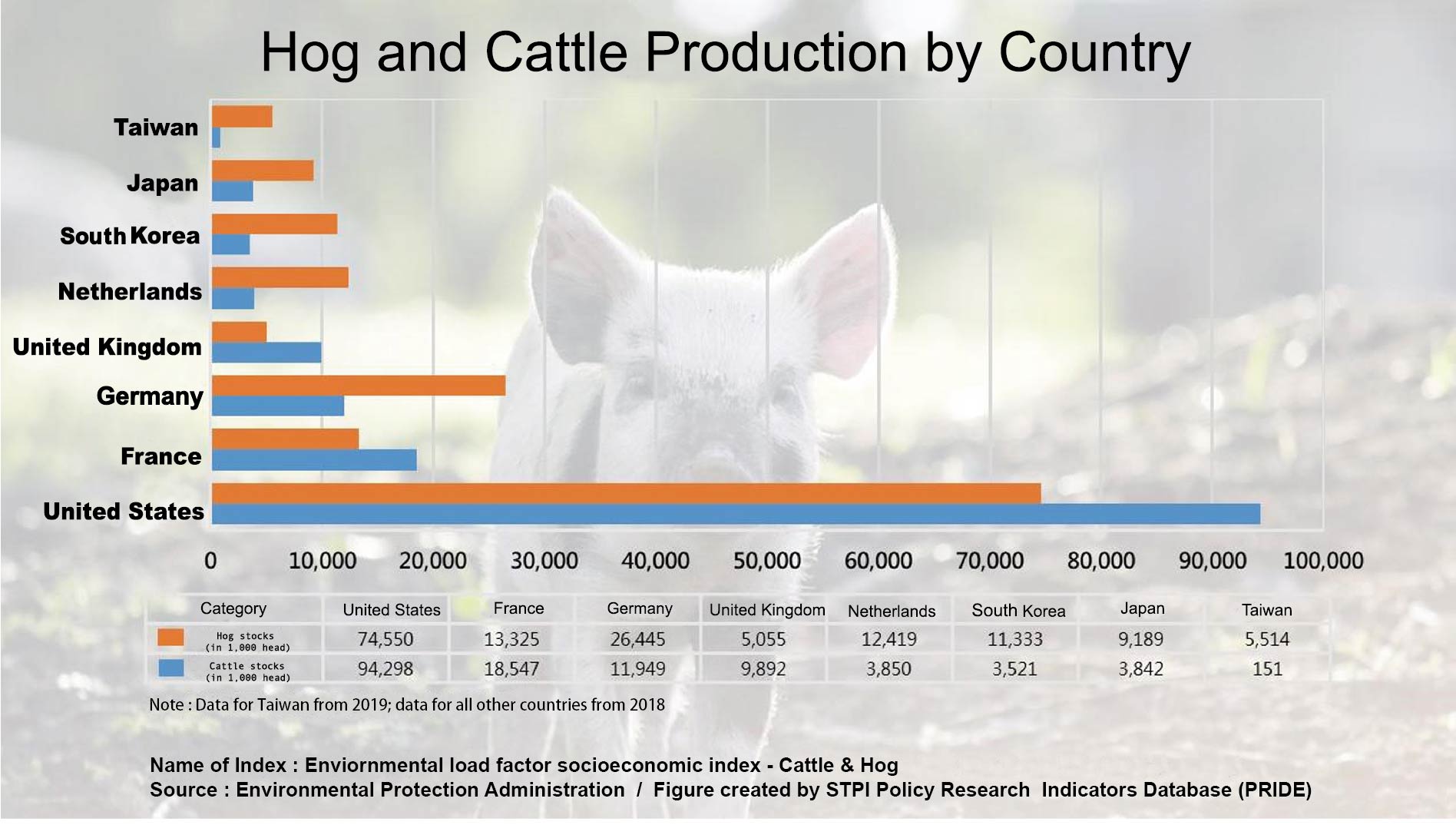
Armed with the country’s economic might, the U.S. livestock industry has made significant progress exporting its meat products to the rest of the world. Taiwan allowed the import of U.S. beef in 2007 on a conditional basis, and again it approved the import of U.S. pork beginning in 2021. To support Taiwan’s pig farming industry and to stabilize the pork market, the Council of Agriculture will set aside a NT$10 billion fund to implement various projects aimed at mitigating the economic impact resulting from the trade agreement with the U.S.
The U.S. is a major producer of livestock, but China takes the top spot in global livestock production, according to the U.S. Department of Agriculture. The three largest countries in pig and cattle production are China, Brazil, and the U.S., with the U.S. producing 74,550 thousand and 94,298 thousand head of hogs and cattle, respectively, quantities large enough to support a meat export industry. In Europe, major hog and cattle producers include Germany, France, and Britain. Germany is the largest producer of hogs and cattle, with 26,445 thousand 11,949 thousand head, respectively. Pork is the principal meat produced in Asian countries such as Japan and South Korea, with production volumes of 9,189 thousand and 11,333 thousand head of hogs. Compared with other countries, Taiwan's meat industry is relatively small, producing only 5,514 thousand head of hogs and 151 thousand head of cattle. Beef must be imported to satisfy local demand because of the country’s minuscule cattle industry....
Despite the relatively small size of Taiwan’s meat production, the liberalization of the industry has had a considerable impact on the local meat market, ranging from fluctuations in meat prices and food safety concerns to the interests and welfare of local pig farmers being jeopardized. Appropriate policy instruments need to be employed to adjust the rules and regulations as well as to improve production methods, such as promoting the efficient production of high-quality meat, increasing the meat products’ added value, advancing traceability certification of agricultural products, and educating the public on food safety. In terms of export, Taiwan needs to create and promote its own brand in pork products, improve animal welfare, and prevent animal diseases in order to raise the quality of its pork products and to improve the general competitiveness of the country’s meat industry.
Related
- News 2019 Win the PRIDE: High School Students Won Award by Analyzing Offshore Wind Potential in Taiwan
- News Global AI Index 2020
- News Life Made Different with MRT
- News Heavy Metal Lead – A Cause of Serious Health Problems
- News How “Free” is Taiwan’s Economy?
- News Our Relationship with Financial Cards
- News I Need A Job
- News Sustainable Development Goals
- News Venture Capital Supports Startups
- News Who is the King of Voyage?
- News Migrating Across Thousands of Miles
- News Investment Incentive Policies
- News The Competitiveness of Taiwan
- News Paradise for Immigrants
- News Smart City
- News Sunrise vs Sunset
- News The Battle between the Railway Duo
- News Hunger Knows No Boundaries
- News Clean Cooking
- News How are Science Parks Faring in This Economy?
- News Booming Auto Sales
- News Airports Under the Tyranny of COVID-19
- News Gaining the Upper Hand Over the Pandemic
- News Making Ends Meet Isn't Enough Anymore
- News Democracy
- News Save Our Planet
- News Women's Disposable Income Worldwide
- News Connecting Everyone on the Internet
- News The Inheritance of Men and Women: A Wealth of Difference
- News From Small Steps to Great Wealth
- News Family Life During the Pandemic
- News Exploring the Journey of Trade
